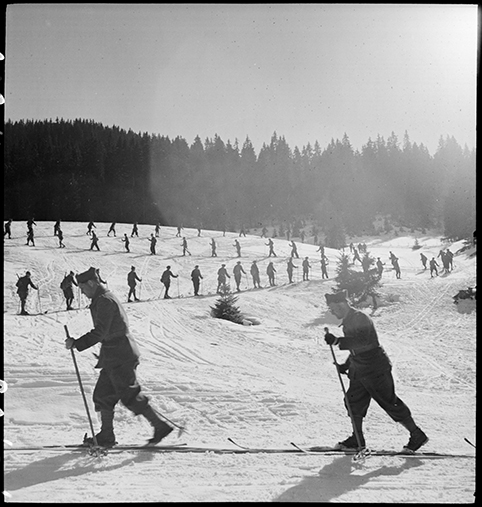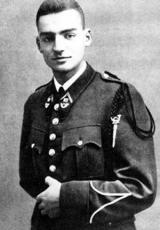The Phoney War
Sous-titre
A picture, a story

We pay tribute to the PyeongChang Winter Olympics with this photograph of a cross-country skiing race in the Jura, dating from the very end of the bitterly cold winter of 1939-40.

© Unknown photographer/SCA/ECPAD/1940
A unit of Chasseurs Alpins takes part in a cross-country skiing race (Jura, March-May 1940)
Ref.: 8ARMEE 29 H 365
The “Phoney War” is our context, and it is well illustrated by this fairly gentle race involving a unit of Chasseurs Alpins, France’s elite mountain infantry. The mountains give off something of a benign air, and the geometric lines followed by the men express a kind of dominion over the land. In reality, the race is actually a training exercise, intended to combat the soldiers’ inactivity and the problems resulting from it (relaxation of discipline, depression). Here, the men are immersed once again in the rules of the group, which since its founding (1888) has embodied military excellence and the physical and mental endurance required to survive in a tough natural environment. Nicknamed the Diables Bleus, or ‘Blue Devils’, the Chasseurs Alpins are identifiable by their traditional dress (dark blue tunic and trousers), but not always their large black woollen beret, known as a tarte. When the “Phoney War” came to an end with the ensuing Battle of France, the Chasseurs Alpins joined the fighting in the lowlands. Later on in the war, some former Chasseurs Alpins turned Resistance fighters joined the maquis de montagne, armed guerrilla groups based in the mountains. One such maquisard was Lieutenant Théodose Morel, known as Tom Morel, who commanded the men of the Glières Plateau.


